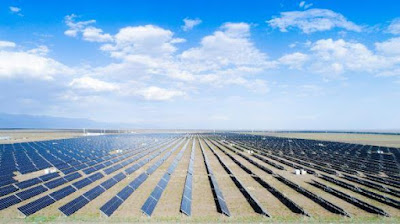Ten years of transformation: from subsidies to parity
In the past ten years, the photovoltaic industry is gradually getting rid of its dependence on policies and subsidies while pursuing technological progress. Amazing transformation.
May 31, 2018, was undoubtedly a watershed in this historical transformation. On this day, the National Development and Reform Commission, the Ministry of Finance, and the National Energy Administration jointly issued the "Notice on Matters Related to Photovoltaic Power Generation in 2018" (called "531 New Deal" in the industry), reducing the scale of photovoltaic power generation in the second half of the year to one-third of the original. One or less, and requires immediate implementation on June 1. The intensity and speed of policy subsidy reduction far exceeded expectations, forming an unprecedented impact on the photovoltaic industry at that time.
Prior to this, benchmark electricity prices and gradually decreasing subsidy intensity effectively supported the large-scale development of the industry, but at the same time, higher on-grid electricity prices and power generation costs also restricted the further development of the photovoltaic industry. In 2017, the average on-grid price of photovoltaics was still as high as 0.94 yuan/kWh, and the power generation cost was also 0.5-0.65 yuan/kWh. Compared with other forms of power generation, the price was not competitive.
Fortunately, China's photovoltaic industry has once again withstood the test. This early coming of age ceremony has accelerated the withdrawal of backward production capacity in the industry. Photovoltaic companies have accelerated the pace of technology research and development and innovation, and the pace of the industry's "cost reduction and efficiency increase" has further accelerated. Many key technologies will be implemented within one year of policy implementation. get a breakthrough.
For example, in the module cell sector, according to incomplete statistics from the Polaris Solar PV network, at least 20 world efficiency records will be created in 2019, including not only PERC products that have become mainstream in the market, but also heterojunction, TOPCon, perovskite, etc. Cutting-edge technology that has not yet been industrialized on a large scale. During the period, LONGi set a world record of 24.06% front-side conversion efficiency of monocrystalline bifacial PERC cells, breaking the previously recognized limit of 24% in the industry.
As time comes to 2020, photovoltaics will usher in a new round of historic development opportunities. The successive proposals to achieve carbon peaking by 2030, achieve carbon neutrality by 2060, and build a new power system with new energy as the main body have given photovoltaics a greater historical responsibility. Focusing on the implementation of the goals, the state has intensively introduced a number of new policies, which not only established the direction and strategic goals for the transformation of wind power and photovoltaics into the main energy sources, but also provided complete support from top to bottom once again, creating a favorable policy environment for the future development of China's photovoltaic industry. .
Photovoltaic has thus entered a new era of historical development. At this stage, as one of the new entities, photovoltaics must not only achieve continuous technological progress, continuous cost reduction, continuous improvement of efficiency, continuous enhancement of competitiveness, and comprehensive realization of non-subsidy parity or even low-cost market-oriented development, but also accelerate the solution of key technological innovations. , high proportion of consumption, industrial chain supply chain security, stability and reliability and other key issues.
For photovoltaic companies, innovation in photovoltaic power generation technology will remain a key factor in addressing these challenges. As Wang Bohua, honorary chairman of the China Photovoltaic Industry Association, said at the "2021 Photovoltaic New Era Forum" hosted by the Polaris Solar Photovoltaic Network: "In the new era, the photovoltaic industry needs to constantly cultivate itself, continue to innovate and develop, reduce costs and increase efficiency, and the industry will go up and down. Only through coordinated development can photovoltaics truly become the main force of the new power system."
In short, looking at the development of China's photovoltaic industry in the past ten years, it can be concluded that technological innovation is the core driving force for the continuous progress of China's photovoltaic industry.
Looking forward to the future, from the perspective of carbon peaking and carbon neutrality, by 2030, the world's newly installed photovoltaic capacity needs to reach 1500GW-2000GW in order to form an effective support for the global energy transition. Therefore, photovoltaic companies or industries should try their best to protect themselves from external influences, return to the main track of battery efficiency improvement, increase investment in research and development of new battery materials and technologies, do a good job in technological innovation, and be committed to reducing costs and increasing efficiency and improving The competitiveness of the photovoltaic industry promotes the large-scale application of clean energy. This is the top priority of the current and future development of China's photovoltaic industry.
We believe that if China's photovoltaic industry can insist on doing this, the next decade, China's photovoltaic industry will be a different scene.





No comments:
Post a Comment